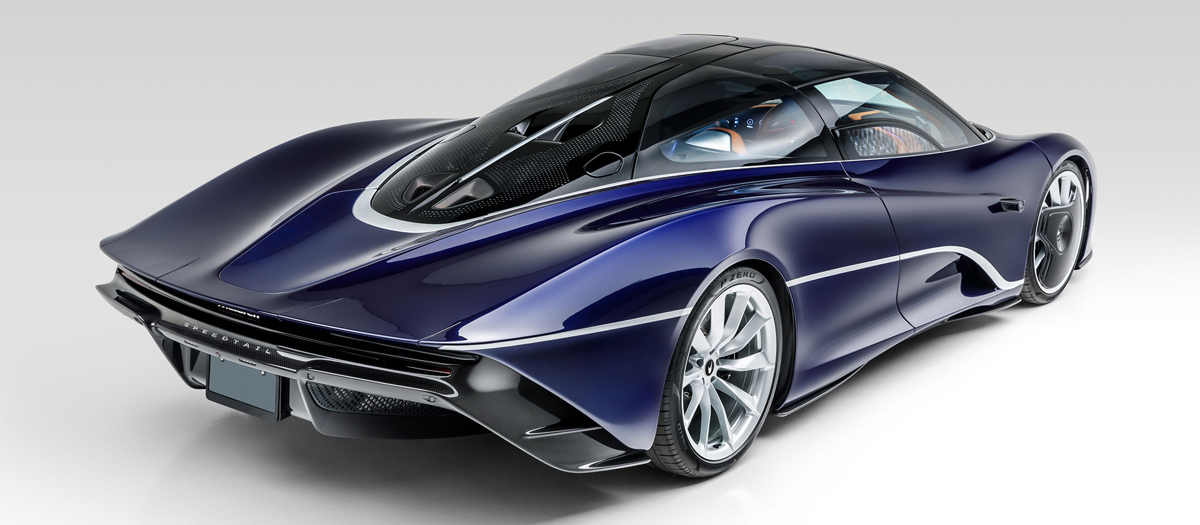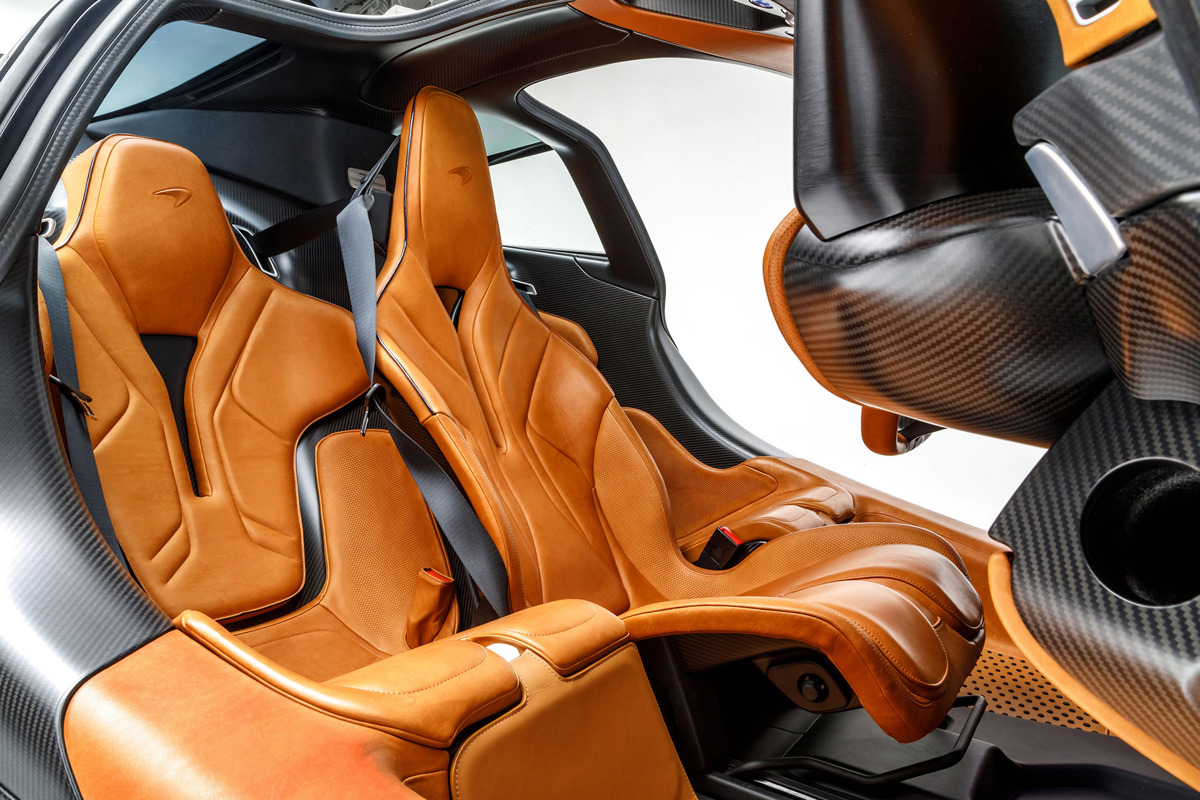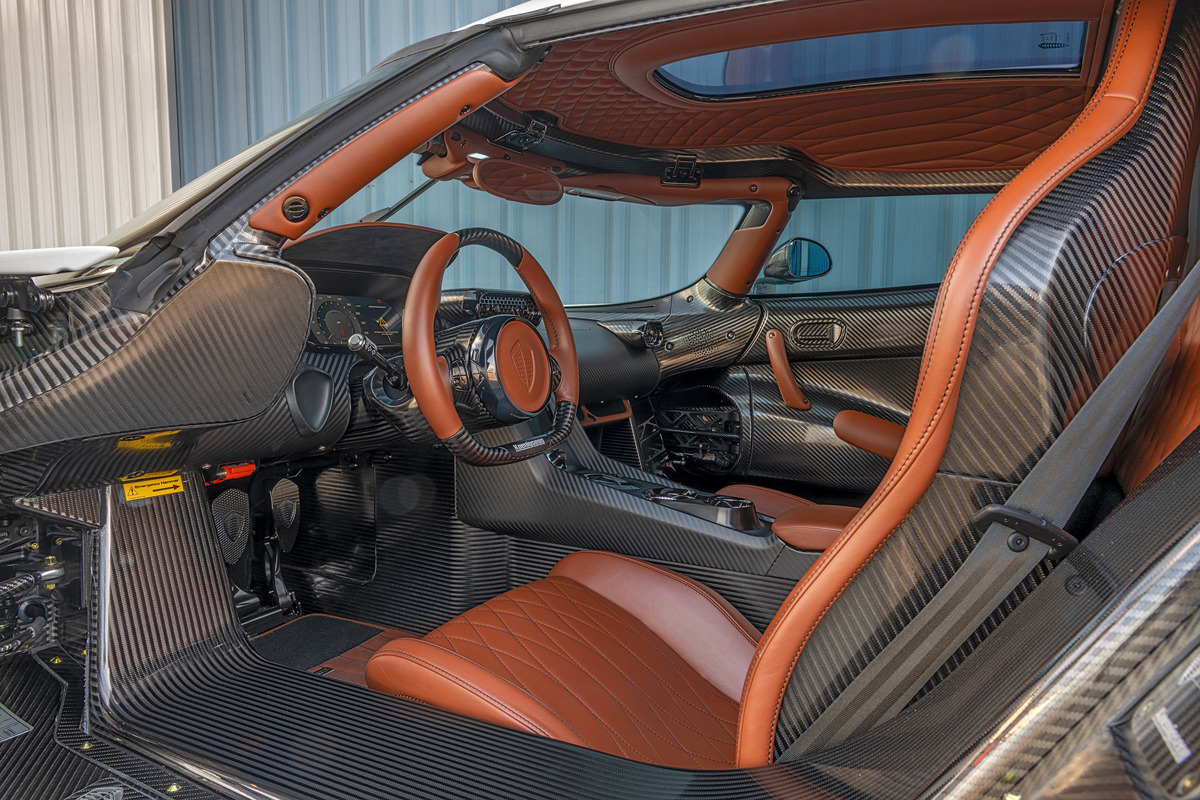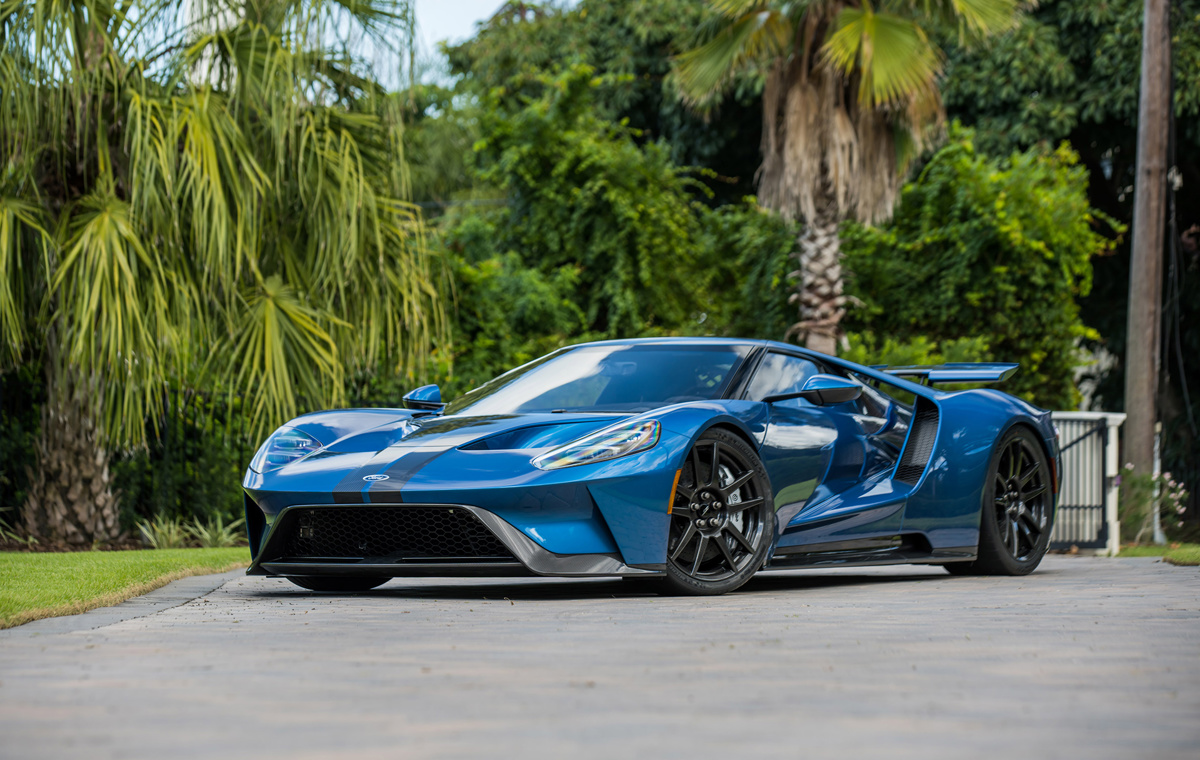The change from one year to the next can bring with it more surprises than the shuffling of a calendar can suggest. New years can provide not only the possibility of future progress, but also the opportunity to return to past projects with renewed energy; the chance to satisfy desires that were long believed to be difficult, if not impossible, to achieve.
In other words, cars so fast they need NASA runways to reach top speed. Modern examples from McLaren and Koenigsegg that would take endless networking with your local hypercar dealer (or months spent on a manufacturer’s waitlist) to acquire. A delivery-miles Ford GT ‘Lightweight’ you can buy without attracting a fleet of Ford attorneys—impossible dreams can indeed come true in 2021.
RM Sotheby’s first auction of this new year offers a selection of supercars and hypercars that would surpass any premiere showroom on the planet. Here is a brief look at four highlights headed to RM Sotheby’s Arizona auction set for 22 January:
2020 McLaren Speedtail
Estimate: $3,500,000 - $4,500,000 USD
Even a manufacturer as mighty as McLaren has unfinished business. Having conquered the motorsport world with their MP4/4 Formula One race car in the late 1980s, then successfully translated that engineering expertise into the low-production road car realm with their ultra-exclusive F1 in the 1990s, for the 21st century, McLaren set about creating not simply a single, subsequent supercar, but a stable of them. Like their predecessors, the modern wave of McLaren supercars were all advanced statements of automotive technology, rooted in racing right down to their carbon fiber monocoque-style chassis.
Regardless of their rich motorsport heritage, McLaren’s move into the business of building series-production supercars starting in 2011 was not a sure bet. The Woking-based company’s hard-won efforts built the brand into a legitimate competitor to storied supercar institutions like Ferrari and Lamborghini over the past decade. With the launch of the P1 in 2013, McLaren’s menu of supercars was once again headlined by a hypercar. But the P1 was no F1; to better the still-impressive top speed of their previous effort, McLaren had more work to do.
And for a team as driven as McLaren, “more work” is a most exciting invitation. The 2020 Speedtail is the result of years of obsession. No convention was too sacred to question; the Speedtail comes with asymmetrical wheel covers to maximize aerodynamic efficiency. While the front headlight treatment is shaped like McLaren’s other supercars, the resemblance is mostly familial—the Speedtail’s face appears to be clean-shaven; titanium strands have been woven into its carbon fiber tub. All adding up to make McLaren’s newest hypercar feel supremely stable as it slips through the air.
Terminating in its namesake feature, the Speedtail proves to be more than a mere moniker thanks to aerovanes integrated in the trailing edge of the Speedtail’s teardrop-style silhouette, is itself not static. At speed, the aerovanes deform to the wind; selecting the “Active Velocity” mode retracts the camera-based side mirrors for an even smoother shape.
McLaren recorded repeatable velocities of 250 miles-per-hour during testing with the Speedtail prototype on the NASA Space Shuttle Landing Facility in Florida, sufficient to unseat the F1. And, like the F1, the 106 lucky Speedtail owners will view the road ahead from a center-mounted driving position.
2019 Koenigsegg Regera
Estimate: $2,600,000 - $2,900,000 USD
Why is it that both the Regera and Speedtail appear so undeniably fresh? For both, the RM Sotheby’s Arizona auction represents the first time these hypercars have appeared at a public sale. The ultimate elixir for those who think they have seen it all in the automotive world, this ultra-rare Regera is one of a mere 80 built by Christian von Koenigsegg’s band of merry engineers in Ängelholm, Sweden, between 2016 and 2020.
Browsing through the gallery of images of this Kevlar-and-carbon-fiber-built beauty, it becomes tough to find an uninspiring angle on the Regera. Witnessing the pinstripe-style interior woven out of this exposed composite material is well worth a few seconds (or minutes) of your time.
With or without the lightweight, removable roof, its show-stopping Dihedral Synchro-helix doors open or closed, every detail on the Regera has been thoughtfully considered. Co-developed with Slovenian exhaust experts Akrapovič, the Regera’s wing-shaped outlets are shaped by history (think of the bat-wing exhausts on pre-war Bugatti race cars), cast with thoroughly modern materials. Total weight of the exhaust system sums up to a scant 8 kg.
2019 McLaren Senna
Estimate: $1,000,000 - $1,300,000 USD
Though the Speedtail claims the title of top speed champion among McLaren’s current offerings, it represents but one branch of the U.K.-based brand’s “Ultimate Series.” With the F1 and P1 marking milestones in disparate avenues of performance-oriented engineering, McLaren’s top-tier road car engineers set about creating a track-oriented hypercar in tribute to arguably the greatest driver to ever race for team McLaren: Ayrton Senna.
Skeptics of the Senna can be silenced with one factoid: Unlike McLaren’s other hypercar offerings, the Senna is powered by internal combustion alone—specifically, a twin-turbocharged, dry-sump lubricated V-8 engine producing 789 horsepower. Tipping the scales at slightly more than 2,600 lbs. sans-fluids, the Senna’s power-to-weight ratio exceeds even the McLaren P1.
Sporting a sparse, track-oriented interior, the Senna’s cockpit is quite literally brightened with the addition of see-through panels in its bespoke doors. Made of tough, tinted Gorilla Glass, these panels allow Senna owners to edge closer to each apex while cornering during track days. Fully legal for road use, the Senna’s novel doors also give the enclosed cabin an open-air feeling, setting this McLaren apart from any other hypercar on sale today.
2019 Ford GT 'Lightweight'
Estimate: $900,000 - $1,200,000 USD
Finally, a Ford. Or maybe make that “the” Ford. Ever since production on the second-generation GT started in late 2016, the magnificent, mid-engined Ford has eclipsed its supercar predecessor to join the rarified ranks of the world’s greatest hypercars. If the turn-of-the-century Ford GT was a modern revision of the mid-century GT40, Ford’s follow-up effort was strictly focused on the future, with an exoskeleton-style architecture that literally pushed the envelope in terms of forward-thinking design.
This motorsports-inspired ‘Lightweight’ variant further underscored the GT’s performance credentials. Modern materials were utilized throughout the build process, right down to the titanium lug nuts. Polycarbonate was used in the rear hatch; the prop shaft was composed of carbon fiber. Ford even removed the retractable cupholders, even if they were made of aluminum. As opposed to the most spartan ‘Competition Series’ models, ‘Lightweight’ Ford GT hypercars retain their stereo speakers and air conditioning units. Some relics of the past are worth taking with us into the future, after all.












